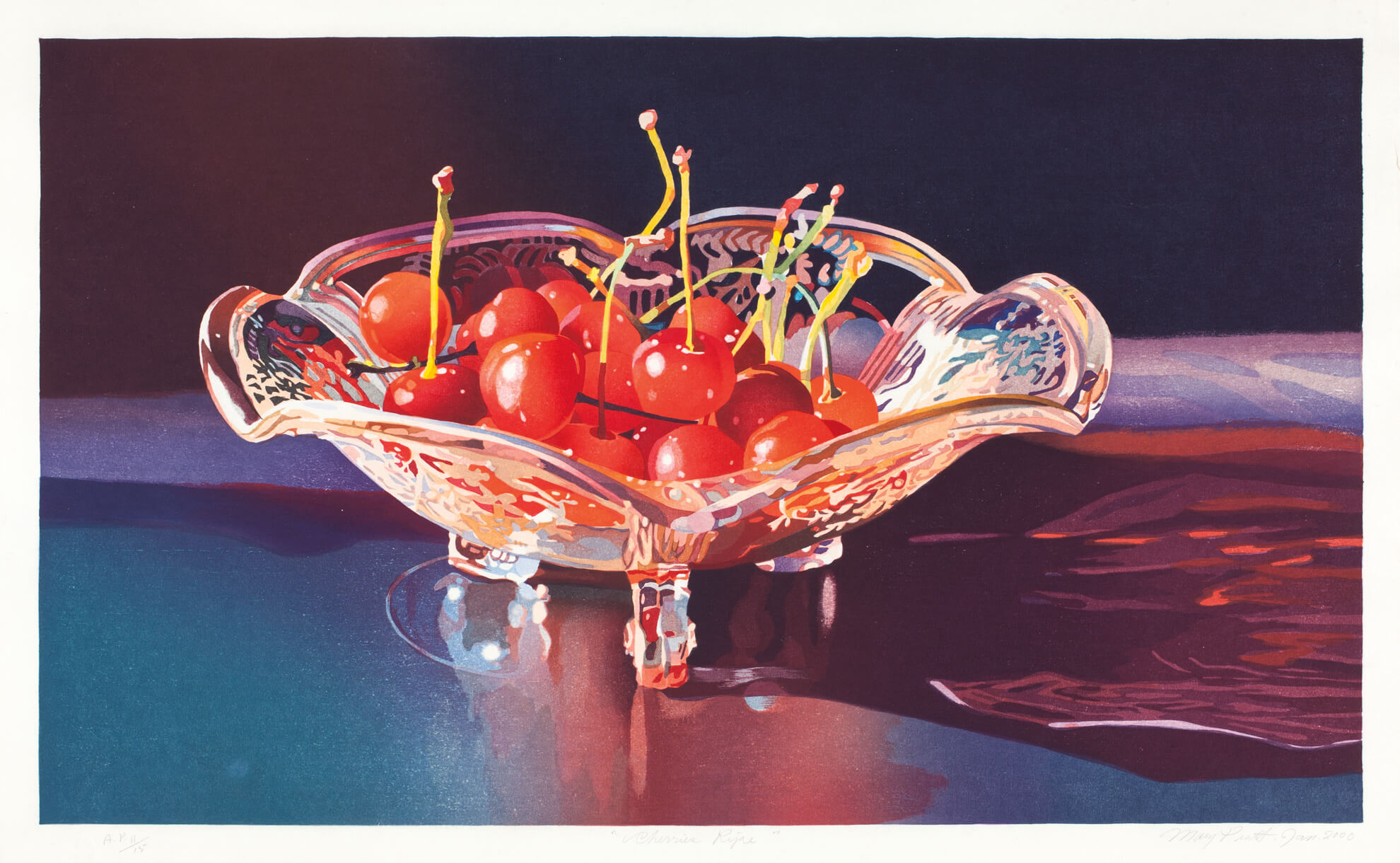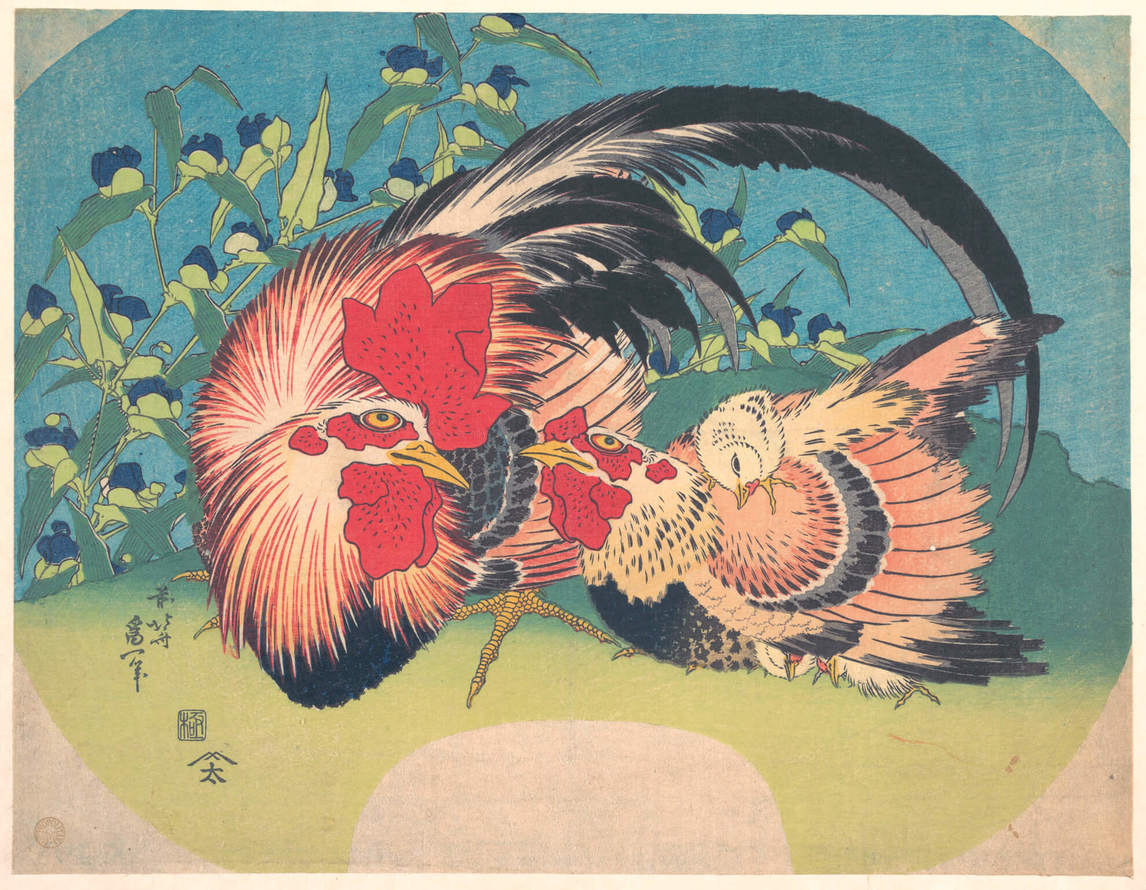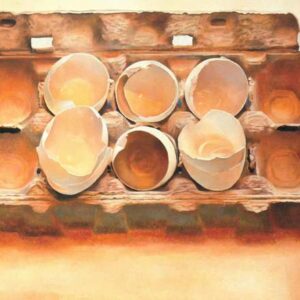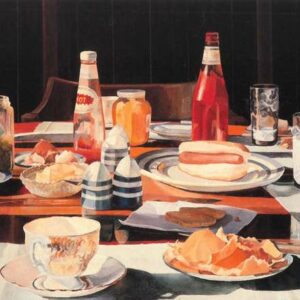Cherries Ripe 2000

Mary Pratt, Cherries Ripe, 2000
Colour woodblock print, 42 x 61 cm
Owens Art Gallery, Mount Allison University, Sackville
Cherries Ripe displays Pratt’s mastery at depicting light, with the translucent fruit nestled in a transparent bowl, set off against a dark background that pushes the central image forward in the picture plane. This work and its related series are not paintings, but prints.

Prints do not play a major part in Mary Pratt’s body of work, but one notable exception is a suite of ten woodblock prints realized by master printer Masato Arikushi (b.1947) between 1995 and 2002. The Transformations series is unique in Pratt’s career, an example of a collaborative creation that put her in a different relationship to the finished work. Arikushi worked from original paintings, transforming them into complicated woodblock prints, often needing as many as one hundred impressions, “each impression carefully registered, hand-inked and hand-rubbed.”
The traditional Japanese ukiyo-e process, with its translucency and transparency, overcame Pratt’s trepidation. She told Robin Laurence in 2002 that her earlier experiences with lithography and serigraphy had been unsatisfactory. She found the experience of working with Arikushi humbling: “Not at all like my experience with lithographers who were ‘arty’ and so impressed with their own craft that they tried to tell me mine.”
For most of the process she was living in St. John’s while Arikushi was in Vancouver. Original works by Pratt were supplied to Arikushi by Pratt’s Vancouver dealer, Andy Sylvester of Equinox Gallery, and tracings of proofs were sent back to Pratt to make comments and colour notes with coloured pencil.
For Pratt, who worked directly from photographs, and often ones that she did not take, the process of making these prints was daunting, and she had her misgivings: “Maybe it could be argued that I could just send him some of the photography I work from and he could take it from there.” Certainly, there was more to this collaboration than that, something Pratt also realized: “I do, however, break up the image after I’ve isolated it. I do make drawings for him, too, of course, and correct colours, and so no, I guess he does need me—but not much.”
In the end, Pratt described each work as a “two-hundred percent print”: “I do my hundred percent, and so does Masato.”

 About the Author
About the Author
 More Online Art Books
More Online Art Books
 Acknowledgements
Acknowledgements